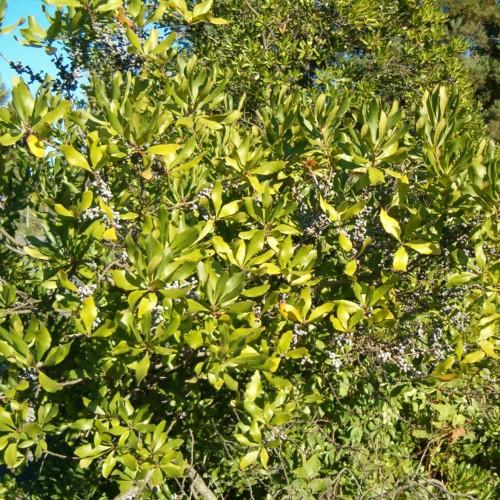
wax myrtle
Morella cerifera 'Luray'
Cycle:
Perennial
Watering:
Frequent
Hardiness Zone:
7 - 10
Flowers:
Flowers
Sun:
Full sun,part shade
Cones:
Yes
Edible:
Yes
Leaf:
Yes
Growth Rate:
High
Maintenance:
Low
Drought Tolerant:
Yes
Salt Tolerant:
Yes
Invasive:
Yes
Care Level:
Medium
watering
Wax myrtles thrive with regular watering – about 1-2 inches per week – during the spring and summer months. Water deeply when you do, allowing time for the soil to be completely saturated. In dry periods or extreme heat, watering every 3-4 days may be necessary. In the fall, water only when the soil drys out, and during winter months, no supplemental watering is needed. It’s important to not over-water wax myrtles as they are susceptible to root rot.
sunlight
Wax myrtle (Morella cerifera 'Luray') is an evergreen shrub native to North America and typically requires full sun (at least 6-8 hours of direct sunlight per day) for optimum growth and flowering. The plant can also thrive when placed in partial shade, although it might not produce as many flowers as it would if it grew in direct sunlight. Wax myrtle should be grown in a location that receives direct sunlight from late morning through mid-afternoon. During the hottest days in summer, it is advisable to provide protection from direct sunlight to keep the wax myrtle from drying out when temperatures reach 85 F or higher.
pruning
To properly prune wax myrtle (Morella cerifera 'Luray'), it is recommended to trim them every 1-2 years in early spring. The amount of pruning depends on the desired shape and size of the plant that you would like to achieve. Typically, you should aim to keep the main shoots shorter than 1/3 of the total height of the shrub, while also removing dead or diseased growth. If the shrub has become overgrown, it is best to start by removing 1/3 of the oldest and longest branches and then gradually trimming back additional growth in subsequent years.
